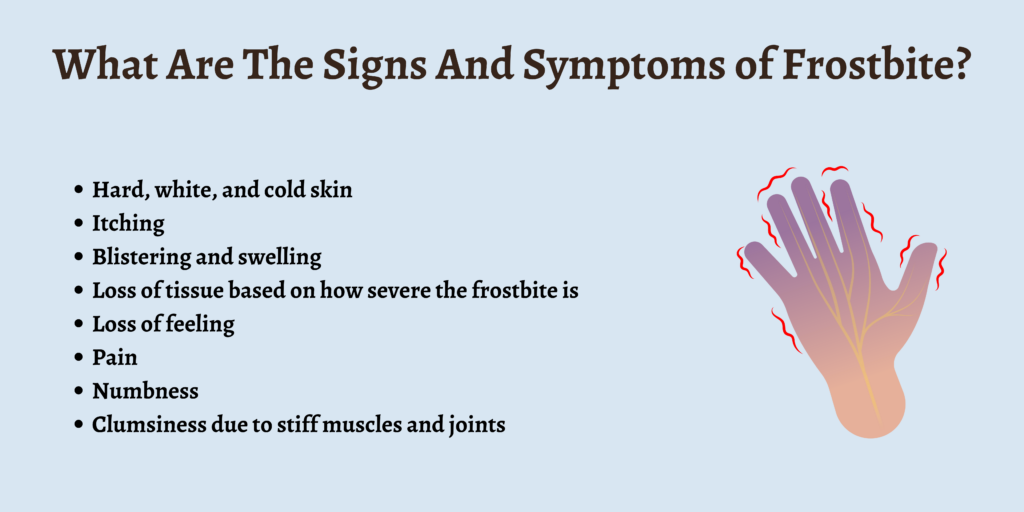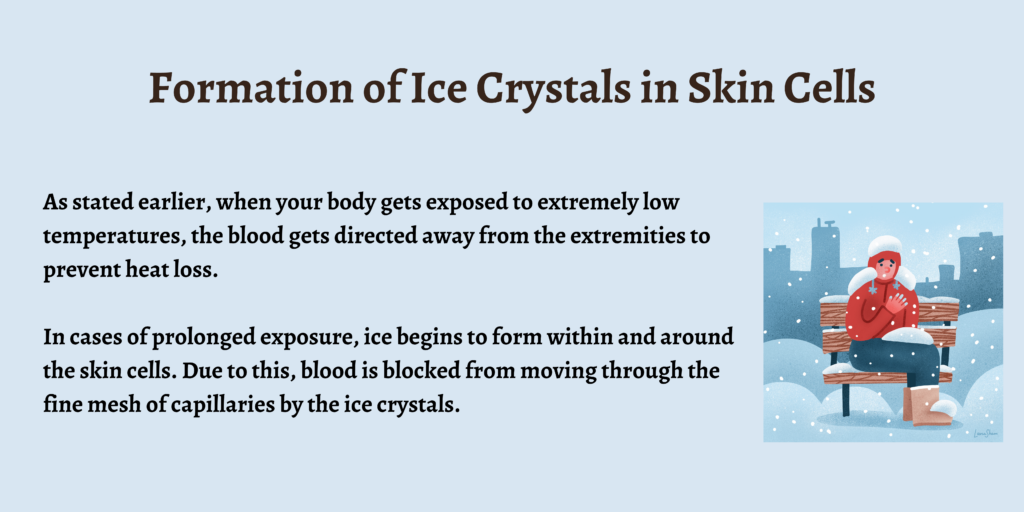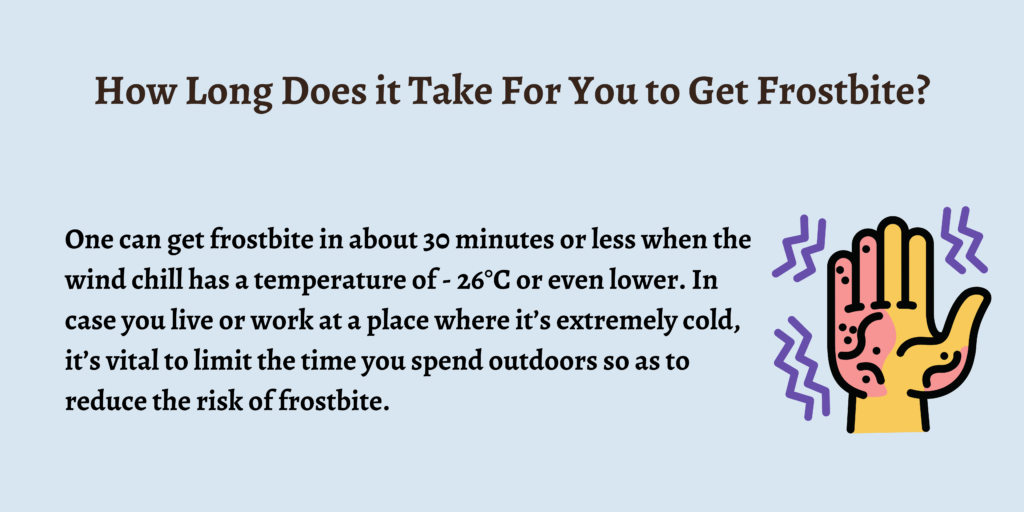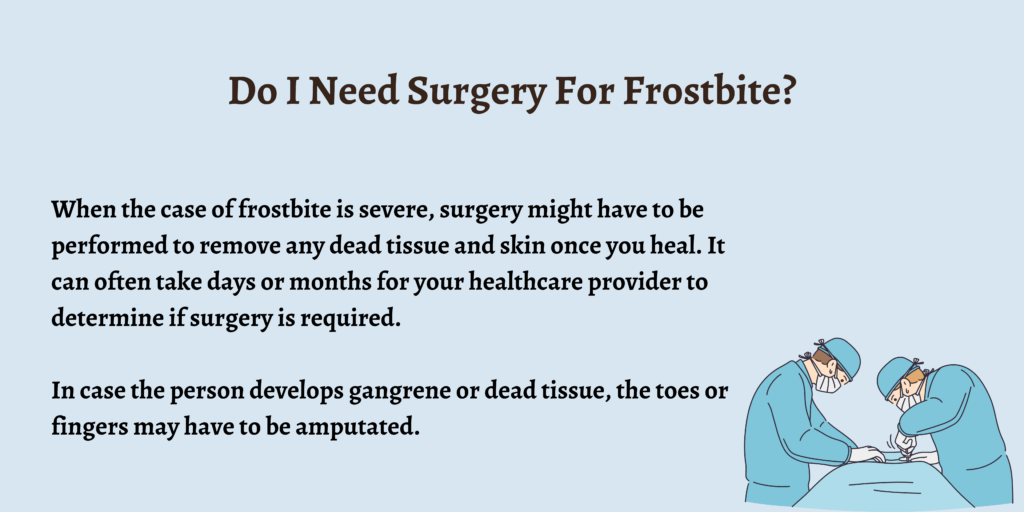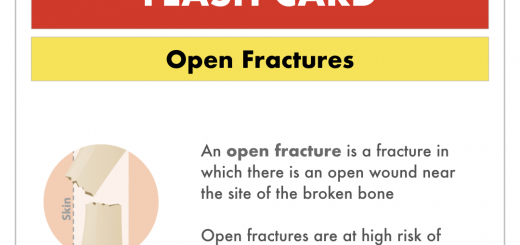First Aid For Frostbite
Frostbite is an injury that is caused when a person’s skin and the underlying tissues freeze. It occurs when an individual is exposed to extremely cold temperatures. The most commonly affected areas when it comes to frostbite are the toes, cheeks, nose, fingers, and ears.
There is a loss of color and feeling in the affected areas, and the condition can also lead to permanent tissue damage.
When human beings are exposed to cold, the primary aim of the body is to maintain the optimal or core temperature. In order to do so, it shifts the blood from the extremities, such as one’s feet and hands, to the central organs, like the lungs and heart.
This is done so as to ensure that the blood flow remains in the organs that require it the most. However, since the blood is redirected, it makes the other organs susceptible to injuries from cold, including the toes, fingers, and other extremities.
In this article, we will discuss the symptoms associated with frostbite, its stages, the complications to know about, and much more.
What Are The Signs And Symptoms of Frostbite?
The signs and symptoms of frostbite include:
- Hard, white, and cold skin
- Itching
- Blistering and swelling
- Loss of tissue based on how severe the frostbite is
- Loss of feeling
- Pain
- Numbness
- Clumsiness due to stiff muscles and joints
Formation of Ice Crystals in Skin Cells
As stated earlier, when your body gets exposed to extremely low temperatures, the blood gets directed away from the extremities to prevent heat loss.
In cases of prolonged exposure, ice begins to form within and around the skin cells. Due to this, blood is blocked from moving through the fine mesh of capillaries by the ice crystals.
As a result of this, the tissue gets deprived of nutrients and oxygen. The longer the tissue stays frozen, the higher the damage.
Who Does Frostbite Affect?
Anyone who is exposed to extremely cold temperatures can get affected by frostbite. The risk is more among people who:
- Smoke tobacco-based products
- Are more than 65 years old or younger than 18 years old
- Don’t have a roof over their head
- Work and live in cold conditions
- Deal with underlying medical conditions such as diabetes, arthritis, malnutrition, and hypothyroidism.
How Common is Frostbite?
Even though frostbite is common, it isn’t common as it once was. This is because people have access to more resources that inform them about how to prevent frostbite and also because clothes that are suitable for colder climates are now more easily available.
How Long Does it Take For You to Get Frostbite?
One can get frostbite in about 30 minutes or less when the wind chill has a temperature of – 26°C or even lower. In case you live or work at a place where it’s extremely cold, it’s vital to limit the time you spend outdoors so as to reduce the risk of frostbite.
Which Are The Common Places That Get Affected by Frostbite?
Although any part of the skin can get affected by frostbite, it’s mainly the extremities where one develops frostbite. This is because they are the regions that are the most exposed during colder climates. These common places include:
- Ears
- Toes and feet
- Fingers and hands
- Nose and face
What Are The Stages of Frostbite?
The different stages of frostbite are as follows:
- Frostnip: This is a mild form of frostbite that causes numbness in the affected region. Once the skin gets warmer, one can experience tingling and pain. It doesn’t lead to permanent skin damage.
- Superficial frostbite: Superficial frostbite causes skin discoloration along with swelling, burning, and stinging. A blister filled with fluid may appear anywhere between 12 to 36 hours once the skin has been rewarmed.
- Deep or severe frostbite: All the layers of the skin, as well as the tissues, get affected by the gradual progression of frostbite. This causes loss of sensation, and the skin can turn bluish-gray or white at this stage. The person witnesses huge blisters after the skin rewarms.
Rewarming The Frostbitten Areas
The frostbitten areas must be rewarmed, and this should only be done once the person has been taken out of the cold environment. This is because if the frozen areas are rewarmed and then re-exposed to the cold, it can lead to more and irreversible damage.
Rewarming requires medical supervision as it involves medical assessments and painkillers. A whirlpool bath paired with a mild antiseptic usually aids in giving the best results for frostbite injuries.
Rewarm the affected area slowly by immersing it in water that’s warm but not hot. The temperature of the water should ideally be between 37°C to 39°C.
The process of rewarming must last for a minimum of 30 minutes and should be stopped only when the affected area can be moved and appears to have a reddish-purple hue.
Rewarming can be done twice a day until there are clear indications that the affected region is starting to heal, the symptoms of which would include the return of the person’s normal skin color and the growth of new skin.
Depending on how severe the pain is, strong pain medications could be required, such as morphine. Ibuprofen is a recommended medicine in such circumstances as it contains protective properties to deal with frostbite.
After Rewarming
After thawing the frostbitten region, it should then be wrapped gently using clean bandages. Make sure to separate the toes and fingers while doing so. The skin requires to be kept clean so as to prevent the chances of developing an infection.
The limbs should be kept raised, if possible, and the affected person should avoid moving too much. The tissues on the affected region will be extremely delicate at this point; therefore, walking should be avoided, as moving the affected toes and feet is not wise at this time.
Once the skin has been rewarmed, it will appear blistered and discolored, after which scabbing will occur. In case the frostbite falls under the superficial category, there will be the formation of new skin underneath the scabs and discolored skin. It takes about six months for the area to heal.
Severe Frostbite
Treating severe frostbite requires the person to be taken to a specialist unit where they will be attended to by medical professionals who possess the required experience with such injuries.
If the chances of major damage are high, the person will be given thrombolytic therapy. The small clots that develop in the frostbitten blood vessels will be broken up through medicine given to your arm through a drip or an injection.
This process prevents further damage and stimulates healing by boosting the flow of blood to the affected area. Antibiotics could also be administered to prevent any infections in the affected region.
A medicine known as iloprost is often used to deal with cases of severe frostbite as it widens the blood vessels that supply blood to the injured region.
If the individual is at risk of losing a toe, finger, or limb, thrombolytic therapy should be considered, or iloprost should be given within 24 hours of the injury. Previous cases of frostbite have demonstrated that the chances of the person healing better are much higher when proper treatment is provided within this time period.
If there is the presence of dead tissue, it will have to be removed, and this procedure is known as debridement. When the case is too serious, the affected body parts may also have to be amputated.
However, the decision to perform amputation or debridement gets delayed by numerous weeks as a tissue that appears to be dead often recovers and heals with time.
Can Frostbite Do Permanent Damage to Skin?
Apart from frostnip, all other forms of frostbite can cause permanent damage to the person’s skin. It can also damage their bone, muscle, or some other tissue.
Long-Term Effects of Frostbite
Some people deal with permanent issues once they experience frostbite, and these long-term effects include:
- Stiffness
- Numbness
- Amplified sensitivity to cold
- Pain in the affected region
Do I Need Surgery For Frostbite?
When the case of frostbite is severe, surgery might have to be performed to remove any dead tissue and skin once you heal. It can often take days or months for your healthcare provider to determine if surgery is required.
In case the person develops gangrene or dead tissue, the toes or fingers may have to be amputated.
Can You Treat Frostbite at Home?
While it’s essential to see a doctor if you develop frostbite, the milder cases can be treated at home. If you’re not able to visit a hospital for some reason or are in a remote region, take steps to treat the frostbite and prevent any damage to your tissues and skin.
Listed below are the ways to provide first aid for frostbite:
- Move to a warmer location.
- Gently remove any jewelry or items of clothing from around the affected region.
- Get rid of your wet clothes and put on dry and soft clothes to prevent further heat loss.
- Don’t apply direct heat on the affected area or rub it.
- Don’t smoke if you develop frostbite, as it can impact your blood circulation.
- Wrap your body with blankets and keep the frostbitten area protected.
- Slightly elevate the affected area.
- Don’t walk if you have frostbitten feet or toes.
What to Expect if You Have Frostbite?
If you think you have developed frostbite, go to the emergency room or contact your doctor. Depending on the stage of frostbite and how long you had the condition, the time it takes for your frostbitten skin to heal can vary accordingly post the treatment.
Mild frostnip usually heals in a couple of days or weeks. Second-stage frostbite takes about six months for the skin to heal properly, wherein the healing process could be accompanied by skin discoloration and scabbing.
Permanent skin damage can occur if a person has experienced the third stage of frostbite, and this is mostly treated through surgery. Your doctor can give you an estimate of how long it will take for your skin to heal, depending on how severe your symptoms are.
What Are The Complications of Frostbite?
The complications of frostbite include:
- Changes in the color of the skin
- Increased sensitivity to cold
- Issues with growth in children
- Infection
- Excessive sweating
- Prolonged numbness in the affected region
- Loss of nails or damaged nails
- Tetanus
- Hypothermia
- Amplified risk of being affected by frostbite again
- Stiff joints or frostbite arthritis
- Gangrene (death of body tissue due to lack of blood flow or infection.
How to Prevent Frostbite
Here are some of the ways in which frostbite can be prevented:
- Don’t spend a lot of time outdoors when the weather is windy, wet, or cold.
- Choose several layers of warm and loose clothing when the temperatures are low.
- Pick a hat that covers your ears and head completely.
- Put on insulating gloves or mittens when you go out in the cold.
- Don’t forget to wear warm shoes and socks.
- Don’t drink alcoholic beverages when you’re outside in cold temperatures, as alcohol causes quicker loss of body heat.
- Stay hydrated and eat meals that are well-balanced.
- Change out of your wet clothes immediately.
FAQs
1. What are the symptoms of frostbite?
The symptoms of frostbite include numbness, itching, pain, loss of feeling, and skin that is hard and white.
2. What are the complications associated with frostbite?
The complications associated with frostbite are stiff joints, excessive sweating, increased sensitivity to cold, and changes in the color of the skin.
3. Which body parts get affected by frostbite?
The body parts that are most likely to get affected by frostbite are the hands, lips, ears, feet, and nose.
4. How can frostbite be prevented?
Frostbite can be prevented by wearing layers of loose and warm clothing, limiting the time spent outdoors during cold and wintery weather, and consuming water and well-balanced meals.
5. Can frostbite be treated at home?
Mild frostbite can be treated at home through first aid. However, other types of frostbite require proper medical care.
Conclusion
If you believe you or someone around you has frostbite, contact your healthcare provider immediately and seek emergency medical services. Severe complications can be prevented by taking quick action and removing the concerned person from cold temperatures.
Once you go to a doctor, be sure to ask them the necessary questions. These questions include what stage your frostbite is at, how to look after your skin once it heals if you require surgery, and if you might experience long-term damage from the condition.

